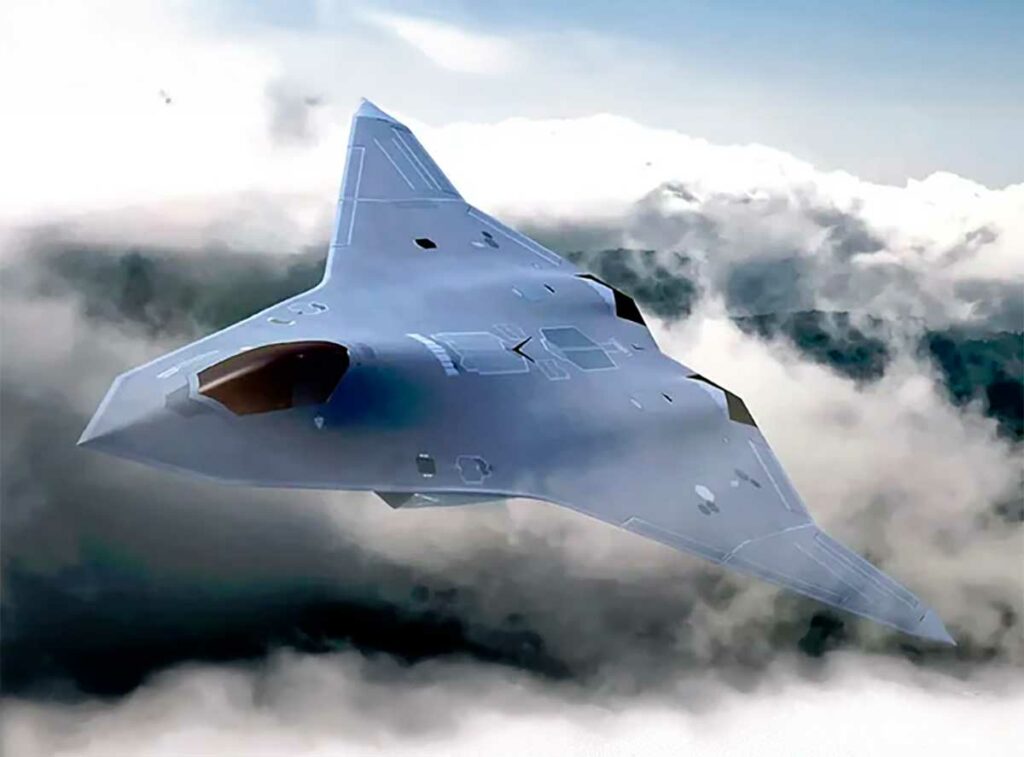
Boeing is making its largest investment in the F-47, the future NGAD fighter jet designed to replace the F-22. Analysis of the industrial and strategic challenges.
An unprecedented industrial investment for Boeing Defense
Boeing has officially announced the largest internal expenditure in its history in the military sector, committing to the development of the F-47, the sixth-generation fighter jet project under the US Next-Generation Air Dominance (NGAD) program. This is the first time the manufacturer has devoted so many financial, human, and technological resources to a defense program, surpassing even the development of the F-15, F-18, and KC-46 tanker.
This strategic decision comes amid intense competition between the three main players in the US military aviation industry: Lockheed Martin, Northrop Grumman, and Boeing. Although not yet officially awarded in its entirety, winning the NGAD contract marks a key milestone for the group, particularly for its St. Louis site, which remains the heart of its fighter production.
Boeing’s management emphasized that the company had financed most of the research and prototypes itself as part of a self-financing development strategy. This risky but potentially lucrative model has become commonplace in response to the Pentagon’s growing demands for technological maturity from the pre-selection stages onwards.
According to industry experts, such an investment could exceed $2.5 billion in the preparatory phase, not even including future production or maintenance contracts. This figure is unconfirmed, but it is in line with orders of magnitude seen in equivalent programs at the demonstrator stage.
An industrial breakthrough around the NGAD fighter concept
The F-47 is not just a successor to the F-22 Raptor. It embodies a profound paradigm shift. Where fifth-generation fighters such as the F-35 relied on passive stealth and system integration, the F-47 is based on a modular, AI-driven architecture with the ability to operate in piloted or autonomous mode.
The NGAD is based on a “system of systems” approach: a highly advanced main aircraft surrounded by interconnected auxiliary drones (called loyal wingmen), all controlled by encrypted, ultra-low-latency data networks. The goal is to overcome current physical and human limitations, particularly in terms of cognitive load and reaction time.
Although the design of the F-47 remains classified, several analysts believe that the aircraft will feature:
- next-generation adaptive stealth based on variable surfaces;
- multispectral sensors capable of operating in data fusion with ground or orbital sensors;
- adaptive cycle thrust vector engines, optimizing fuel consumption and thermal stealth.
The advanced maturity of the project mentioned by Boeing suggests that the prototype is at the operational flight demonstrator stage, or very close to it. The US X-Plane project, notably the NGAD X, corresponds to this phase.

Major repercussions for US industry
Boeing’s involvement in the F-47 redefines its position in the military aviation landscape, which it had partially lost to Lockheed Martin with the success of the F-35. Until now, Boeing has relied on modernized older platforms (F-15EX, F/A-18E/F), whose strategic relevance is waning in the face of tomorrow’s threats.
The F-47 program gives Boeing Defense a long-term technological edge. It reactivates skill chains in propulsion, avionics integration, composite materials, and above all, embedded artificial intelligence. It also helps maintain highly skilled jobs in key states such as Missouri and Pennsylvania, which are important elements in Boeing’s political strategy vis-à-vis Congress.
In the short term, this announcement puts pressure on other suppliers. Lockheed Martin is forced to step up work on its own sixth-generation projects, while Northrop Grumman, a partner in the B-21 Raider, could seek a more modular role focused on escort drones.
Finally, the entry into production of the F-47 – scheduled for 2030 if the schedule is met – will pave the way for massive exports to the United States’ strategic allies, particularly those excluded from the F-35 program or seeking a more technologically advanced alternative. Japan, the United Kingdom, and Israel are all tipped as potential customers or partners.
Strategic challenges for US air superiority
The NGAD program, of which the F-47 is the centerpiece, responds to a fundamental need: to replace the previous generation of stealth aircraft, whose design dates back to the 1990s. The F-22, although still capable, is limited in number (fewer than 190 in service) and difficult to upgrade.
Threats are evolving rapidly: China is deploying the J-20 in increasing numbers and is working on an upgraded version with a WS-15 vector engine. Russia is stepping up announcements about the Su-57 and its companion drone, the S-70 Okhotnik. In this context, maintaining a technological lead is no longer enough; it is now necessary to guarantee integrated dominance across the entire spectrum: stealth, electronic warfare, information superiority, long-range strike, and autonomy.
The F-47 embodies this ambition. It is no longer just an aircraft, but a central platform in a digital, joint-arms ecosystem. It will be connected to satellites, naval systems, ground-based radars, and surveillance drones. If necessary, it will be able to coordinate strikes using automated decision-making algorithms.
This type of system requires a rethought doctrine of use: more agile, more distributed, and potentially less dependent on the number of trained pilots. It is also a lever for reducing long-term operating costs through the partial automation of low-tactical-value missions.
Reassessing Boeing’s role
With the F-47, Boeing is taking a significant financial risk, but is repositioning its military activities in a disruptive dynamic. The company is seeking to regain a central place in the construction of the US arsenal of the 21st century. By injecting massive amounts of capital, it is positioning itself as a designer rather than just a subcontractor.
The NGAD is not just another aircraft. It is a technological and strategic pillar that will shape military aviation for the next 30 years. And Boeing intends to play this role with resources, ambitions, and an industrial approach that are much more aggressive than in the past two decades.
War Wings Daily is an independant magazine.